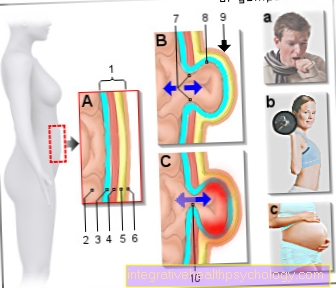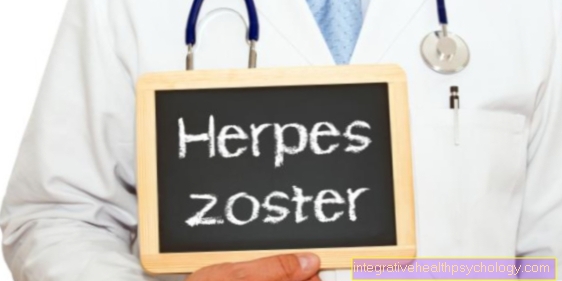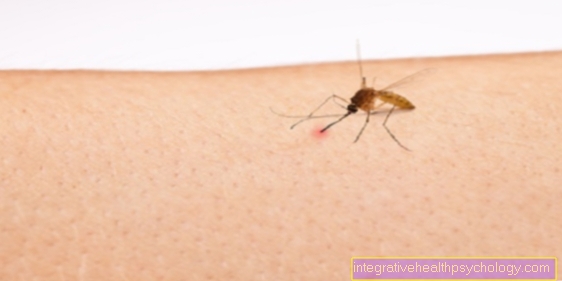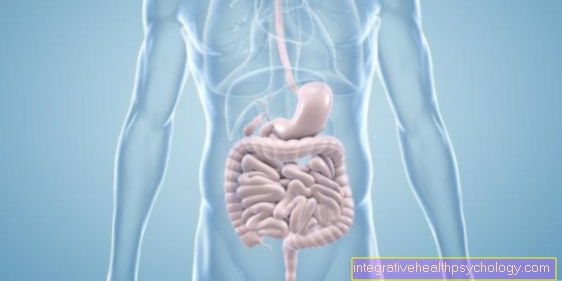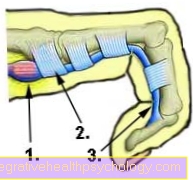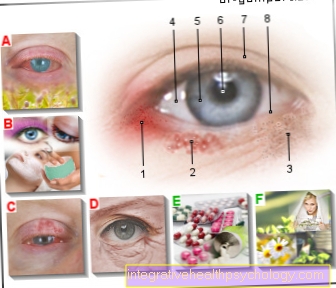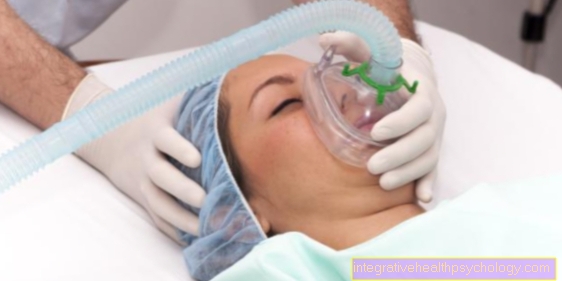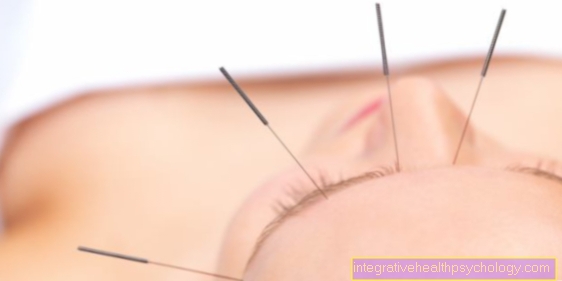Lymphocyte transformation test
What is a lymphocyte transformation test?
The lymphocyte transformation test (LTT) is a special laboratory procedure. It detects antigen-specific T lymphocytes.
The T-lymphocytes are white blood cells that the body needs for the immune defense, i.e. for defense against foreign material, such as Bacteria. Antigen-specific means that these T lymphocytes can recognize a certain foreign protein, i.e. an antigen, and then initiate the immune defense.
These exogenous proteins or antigens are e.g. formed by bacteria or viruses. They also play a role in allergies. In the event of an allergy, these antigen-specific T lymphocytes recognize an actually harmless protein as dangerous and incorrectly start an immune reaction. This is how an allergic reaction occurs.
The lymphocyte transformation test can test whether T lymphocytes are present against a specific antigen. In this way, among other things, allergies can be recognized and detected.

When is a lymphocyte transformation test done?
Essentially, the lymphocyte transformation test is used to detect and detect allergies. However, it is not possible to check for all possible allergies.
A selection must first be made as to which allergies would like to be tested for. The allergies can be tested if there is a suspicion that a particular allergy may exist.
However, the test can also be carried out prophylactically in some cases. One situation in which prophylactic testing might be useful is with denture materials.
Allergies to denture materials can occur. A lymphocyte transformation test can be performed on the materials in question to ensure that the selected substitute materials are tolerated.
In addition, the lymphocyte transformation test is used to detect borreliosis. The test is also often used in research.
However, the lymphocyte transformation test is not useful for detecting all allergies, because there are more suitable methods for some allergies.
Evidence of Borrelia
The lymphocyte transformation test is used to detect borreliosis. However, its informative value in the case of Lyme disease is very controversial.
First and foremost, the diagnosis of Lyme disease should be based on symptoms and a blood test. In some cases this is not sufficient for a clear diagnosis.
In such cases, a lymphocyte transformation test can be used. However, if there is no evidence that Lyme disease may be present, the test should not be used, as there is also a risk of misinterpretation. The test can also be used to check whether an antibiotic treatment has been successful or to identify reactivated Lyme disease.
Evidence of allergies
The main indication for a lymphocyte transformation test is the detection of allergies. Before carrying out the test, it must be clear which allergies are to be tested for.
Only delayed type allergies (type 4) are tested. Lymphocytes play an important role in this type of allergy. Typical allergies that are detected in a lymphocyte transformation test are drug and metal allergies.
The test can now also be used for type 1 allergies.
In the case of many allergies, detection by means of the lymphocyte transformation test is not possible or not necessary, as other methods are completely sufficient for detection. For food allergies the test is e.g. not useful.
Do you want to know if you have an allergy? - Then read our article on that Symptoms of an allergy
Prepare the lymphocyte transformation test
First of all, there should be a detailed discussion with the doctor, in which the symptoms are described. If necessary, further allergy tests are carried out. The doctor decides whether a lymphocyte transformation test would be useful.
Would you like to know what other tests are available to detect an allergy? - Then read our article on that Allergy diagnostics
Before performing the test, it must be determined which allergies are to be tested for.
Blood is required from the patient for the lymphocyte transformation test. The blood is best taken in the morning and sent to the laboratory on the same day. However, the blood must not be cooled.
How does a lymphocyte transformation test work?
The lymphocyte transformation test must be performed in a highly qualified laboratory. The antigen-specific T lymphocytes are examined further in the laboratory.
First, they are separated from the whole blood. They are then exposed to an antigen that comes from the material that is suspected of causing an allergy.
After a certain waiting time, radioactive thymidine is added to this mixture. This is done so that the radiation emanating from the thymidine can later measure how much the cells divide. Because the radioactive thymidine attaches itself to the DNA.
The degree of cell division is used to assess whether the lymphocytes have been stimulated by the antigen. This would then mean that there is very likely an allergy.
Evaluation of a lymphocyte transformation test
The evaluation is based on cell division. A high cell division tends to suggest an allergic reaction.
However, there are reference values for each case and controls are carried out.
For the evaluation or the correct interpretation of the test result, further clinical findings and allergy tests must be taken into account. Therefore, this test is not offered by all allergological practices, but mainly by immunological specialists.
They have more experience and can better assess the significance of the test in the overall context. The test will probably continue to develop in the future so that it can be offered more widely and its informative value increases.
How sure is the test result?
Since drug intolerance is best investigated, the best informative value can be made with the lymphocyte transformation test. In spite of all this, one does not get a 100% reliable test result.
To be sure, there must be additional evidence of an allergy to the particular drug. In addition, experienced doctors and very good laboratories achieve better results.
Especially when testing in a prophylactic sense, e.g. for metal incompatibilities in dental implants, the validity of this test is not so certain, even if it is touted by some practices. Therefore, at the moment it only makes sense in this case if there is really a suspicion of an allergy. However, the test will improve in the next few years, so that the test results will be even more reliable.
Risks of a lymphocyte transformation test
First of all, there is a risk that there will be a wrong test result for various reasons, which would then have further negative consequences.
Apart from a false test result, there are no risks for the patient, other than those that exist with every normal blood draw and these are very low.
A small bruise often forms at the extraction point. Infections from blood sampling are extremely rare and are minimized by prior disinfection. In some people it can come to a psychologically induced circulatory collapse.
Duration of a lymphocyte transformation test
The blood collection is usually done within a few minutes by trained staff. If the veins are poor, it can sometimes take a little longer. The sample must be sent to the laboratory on the same day.
The lymphocyte transformation test then begins there. The laboratories need about five days for this. The result is then sent to the attending physician.
This person must correctly interpret the test result in the context of the complaints and, if necessary, other diagnostics.
So a little patience is required after the blood sample is taken before the doctor gives the final result.
Cost of a lymphocyte transformation test
The test is very cost-intensive because it is very complex and requires certain technical devices. The prices can vary slightly from laboratory to laboratory. On average, they are between € 140 and € 160. The price of course also depends on what and how much is examined.
Is the lymphocyte transformation test a health insurance benefit?
Some statutory health insurance companies cover the costs of the lymphocyte transformation test - but usually only if the test is carried out to diagnose a drug allergy.
It is best to ask your own health insurance company or your doctor whether the costs will be covered before taking the test. If necessary, an application for the assumption of costs can also be submitted to the health insurance company.
Private health insurance companies often cover the costs in full.


